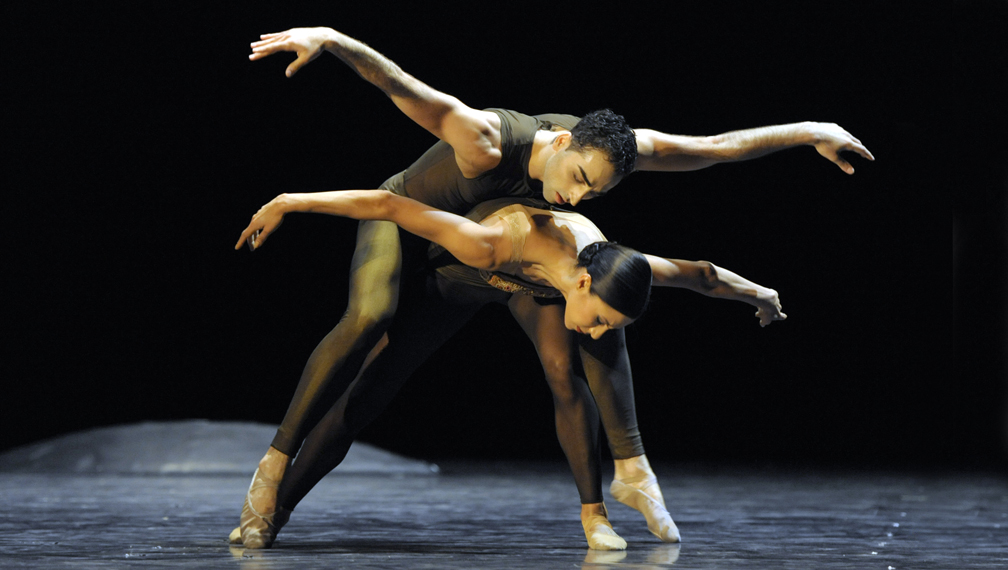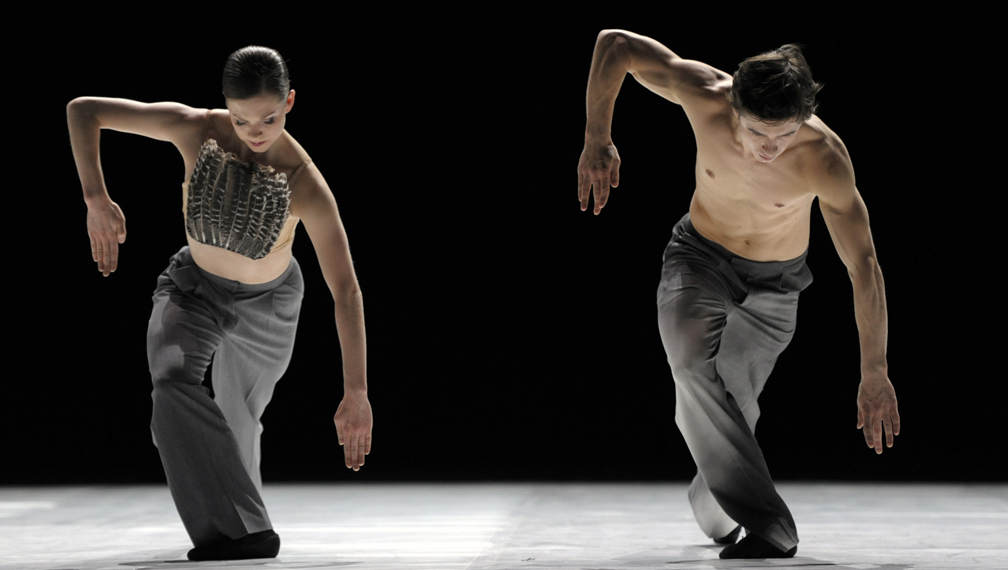02 June 2012, Staatsoper im Schiller Theater, Berlin
This program, a triple bill by two choreographers with a strong body of work to their name, and one whose work I hadn’t previously seen, promised much but delivered little.

The evening opened with Nacho Duato’s Arcangelo, a meditation, the program told us, on heaven and hell. Made in 2000, Arcangelo is set to music by of the Baroque period by Arcangelo Corelli and Alessdandro Scarlatti. Choreographically and visually it had many of the touches that characterise others of Duato’s works—the turned up feet; the deep pliés in second position; the bird-like outstretched arms, often with palms facing down; the intricate partnering that produces unusual and striking shapes as bodies combine; and the mysterious appearance and disappearance of dancers through the black backcloth. And as with every Duato work, Arcangelo was beautifully and evocatively lit, this time by Brad Fields.
But for Duato’s works to fully achieve the sublime qualities that make them the admirable works of art that they are, they need to be performed differently from what I saw. To tell the truth I didn’t feel an intense emotional connection between the dancers as they contemplated their state of being. And I thoroughly disliked the way the exits through those back curtains were so obvious—the opening tended to be flung apart and as a result the exit was not the seamless one I have come to expect. I had never seen Arcangelo before and wanted to like it but in the end I just felt flat, even after the conclusion when two dancers ascend to heaven pulled up by a length of black cloth.
In the middle of this triple bill was William Forsythe’s Hermann Schmerman, first performed in 1992 and set to music by Thom Willems. Again all the choreographic hallmarks of a Forsythe work were there—the outrageously difficult moves and combinations as Forsythe explores what the body can do within the classical medium. But it never seemed that the dancers had a strong enough classical technique—especially the right amount of ‘turn-out’—to make the choreography look like an experiment with movement vocabulary. Looking at still images of the dancers this doesn’t seem as if it should be the case, but onstage, where it matters, the look was wrong in my opinion. Perhaps it was the dancers’ apparent concentration on showy effects? The one dancer whose work I really enjoyed was Federico Spallitta who danced the pas de deux with Nadja Saidakova. His solo variation was sinuous and liquid and a delight to watch.
The final work, entitled And the sky on that cloudy old day, was by Marco Goecke currently resident choreographer with Stuttgart Ballet. Goecke says his inspiration was the music that accompanied the work—John Adams’ Guide to strange places, itself inspired by a book invoking the landscape of Provence in southern France. But the relationship between these thoughts by Goecke and the choreography remained unclear throughout the work.
Choreographically And the sky… appeared to deny the body as a total means of expression with pretty much all the movement concentrated in the arms and hands. The dancers were extraordinarily skilful in executing these movements, some of which were very fast to the extent that the arms and hands often became blurred. There was very little partnering although there was a good deal of placing the nine dancers (four women and five men) in patterns and groups. They used some interesting props, including fans made from feathers, which they occasionally used to hide their faces. But the point of it all was lost on me I’m afraid.

The director (intendant) of this company is Vladimir Malakhov, whose dancing I have previously admired. In fact what I had seen of him before partly inspired me to book a ticket to see the show. He danced in both Arcangelo and And the sky… I prefer to remember him, however, as the stunning classical dancer I saw some years ago in New York.
Michelle Potter, 3 June 2012